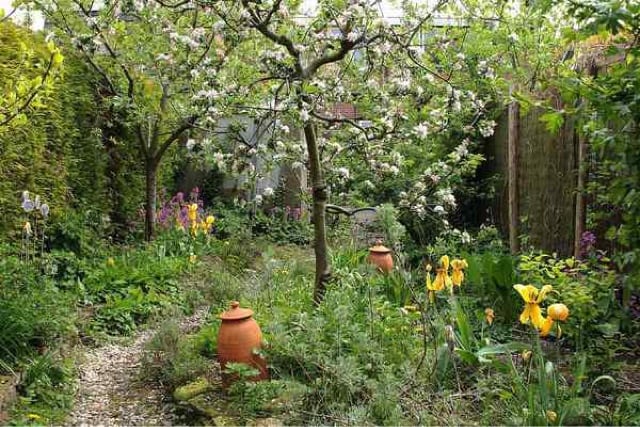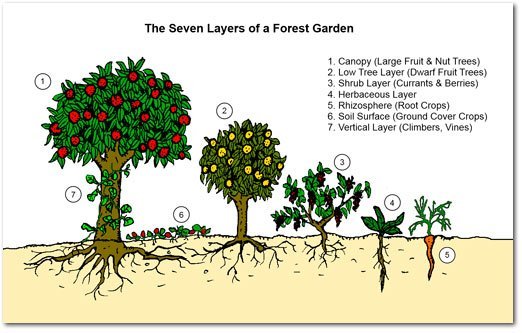Join our community
of garden lovers.
Sign up with your e-mail address to receive our latest offers,
competitions & local gardening tips
competitions & local gardening tips

Food forests and potagers are interesting ways of planting food gardens. In the past few years it has gained more and more traction. However these concepts have been used historically for many centuries. Both food forests and potagers are integrated food garden designs focussing on sustainable bio-diverse food gardening with huge environmental benefits.
We’re all familiar with the concept of forests – lush, abundant expanses of pristine wilderness, teeming with life, a richness of biodiversity and awe-inspiring to behold. Trees and plants intertwined, filling every possible space, the very well-spring of life itself!
Forests exist fine on their own. There’s no mowing, weeding, spraying, or digging required. No pesticides, fertilisers, herbicides or nasty chemicals. No work and no people either. Now, imagine if everything in this lush, abundant, spectacular forest was edible!
Nature grows in a highly optimised pattern, utilising multiple layers and making the most of both horizontal and vertical space.
A food forest typically is comprised of seven layers
If your space is restricted you might want to consider a potager. A potager is based on the same integrated principles as a food forest and have intermingled vegetables, fruits, flowers, and herbs planted in an informal way.
There are many benefits to integrated bio-diverse planting.
Spring is a very good time to get that food forest or potager going. Remember this is not an instant project. As the garden matures and become more independent the benefits of such a garden will escalate as well.
Join us this Friday 9 September 2022 for our FREE online workshop on: ‘Food Forests and Potagers’, with Garden Guru Sue Both.
Please use the following login details to join us at 11am sharp over Zoom:
Meeting ID: 822 2387 1826
Passcode: 727759
or use the following direct link: https://bit.ly/3B5nBYX
